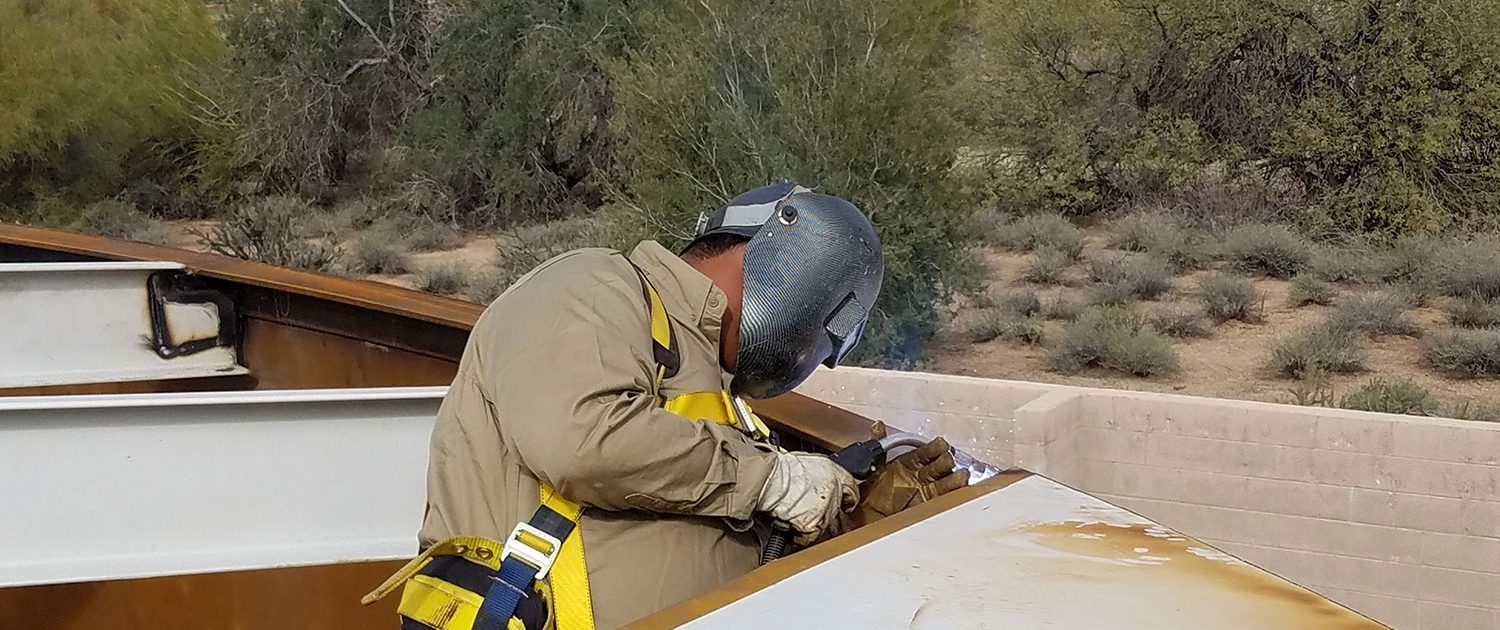Ingenious Trends in Steel Construction: Enhancing Resilience and Precision
In the realm of steel manufacture, the quest of sturdiness and accuracy has led to a wave of cutting-edge patterns that are improving the industry. From innovations in welding modern technologies to the assimilation of robot automation in construction processes, the landscape of steel production is developing quickly. High-strength alloy growth, combined with the utilization of 3D modeling and simulation software program, is pushing the borders of what is attainable in terms of architectural integrity and accuracy. The expanding focus on lasting methods in steel manufacturing is not just driving effectiveness however additionally fostering a more eco aware approach to manufacture. These fads are not simply shaping today yet also preparing for the future of steel manufacture, promising additional improvements in sturdiness and accuracy.
Advanced Welding Technologies
In the world of steel fabrication, the adoption of advanced welding technologies has actually considerably reinvented the market's approach to accomplishing superior top quality and precision in structural welds. Advanced welding modern technologies, such as laser beam of light welding and rubbing stir welding, have actually emerged as game-changers in the area. By leveraging these advanced welding strategies, steel fabricators can raise the resilience, stamina, and accuracy of their architectural welds, fulfilling the significantly demanding requirements of contemporary construction tasks.
Robotic Automation in Construction
Embracing robotic automation has become a cornerstone of modern-day steel fabrication methods, streamlining processes and improving efficiency across the sector. Robotics are transforming the means steel parts are manufactured, providing unparalleled precision and rate while reducing human error. These automated systems can manage repeated jobs with consistent accuracy, causing greater top quality final product.
One key advantage of robot automation in steel fabrication is the ability to work around the clock without fatigue, dramatically enhancing production outcome. This constant operation lessens downtime and increases job timelines, eventually conserving prices for manufacturers. Additionally, robotics can be set to perform complex tasks that may be difficult or dangerous for human employees, improving safety and security in the work environment.
Furthermore, robot automation enables smooth assimilation with other digital modern technologies, such as computer-aided design (CAD) software program and Internet of Points (IoT) systems (steel fabrication melbourne). This interconnected strategy enhances communication in between various phases of manufacture, optimizing process and making certain real-time monitoring and control. As the steel manufacture industry remains to develop, robotic automation attracts attention as a transformative pressure driving performance and precision in producing procedures

High-Strength Alloy Development
The development of high-strength alloy advancement in steel construction is reshaping the market's strategy to enhancing material sturdiness and performance. High-strength alloys are engineered to display exceptional mechanical buildings, such as raised tensile strength, toughness, and deterioration resistance contrasted to typical steel qualities. By integrating these innovative alloys right into construction processes, manufacturers can generate elements that stand up to higher stress levels and extreme environments, resulting in more trustworthy and sturdy end items.
One trick benefit of high-strength alloy development is the capability check my source to minimize material density without compromising structural honesty. This not just results in lighter-weight parts however likewise adds to set you back savings and improved performance in construction and setting up processes. Furthermore, the boosted strength-to-weight proportion of these alloys enables the layout and construction of frameworks with higher load-bearing abilities while lessening overall weight.
3D Modeling and Simulation Software Program
Developments in steel manufacture procedures have actually been dramatically driven by the integration of cutting-edge 3D modeling and simulation software application tools. These devices permit fabricators to develop thorough virtual designs of their jobs, enabling them to picture the last product with accuracy prior to any kind of physical job starts.

Sustainable Practices in Steel Manufacturing
Integrating lasting methods right into steel production procedures is important for minimizing ecological impact and making sure long-term source availability. One key lasting practice is the fostering of energy-efficient modern technologies to decrease greenhouse gas exhausts throughout the steel manufacturing procedure. This consists of using renewable energy sources, such as solar or wind power, to power steel Read Full Article plants and applying energy-efficient equipment to enhance power usage.
One more important aspect of sustainable steel manufacturing is the liable sourcing of resources. This includes making certain that the iron ore and other resources used in steelmaking are obtained from moral and eco-friendly sources. By promoting transparency in the supply chain and sticking to rigorous ecological standards, steel producers can reduce the adverse impacts of resource extraction on regional ecosystems and areas.

Conclusion
In conclusion, the cutting-edge patterns in steel construction such as advanced welding innovations, robotic automation, high-strength alloy development, 3D modeling and simulation software, and lasting methods are enhancing the resilience and precision of steel products. These advancements are transforming the steel manufacture industry by boosting high quality, sustainability, and effectiveness. It is clear that the future of steel construction lies in welcoming these cutting-edge modern technologies to meet the demands of modern building and construction and manufacturing sectors.
In the world of steel construction, the pursuit of durability and precision has led to a wave of ingenious trends that are improving the market.In the world of steel construction, the adoption of cutting-edge welding modern technologies has actually significantly changed the market's approach to accomplishing exceptional top quality and accuracy in architectural welds. As the steel manufacture industry continues to progress, robot automation stands out as a transformative pressure driving effectiveness and precision in making processes.
Moreover, recycling and reusing steel scrap and waste materials play a substantial function in improving the sustainability of steel production. metal fabrication melbourne.In conclusion, the innovative fads in steel construction such as sophisticated welding technologies, robot automation, high-strength alloy growth, 3D modeling and simulation software, and sustainable methods are enhancing the durability go to website and precision of steel products